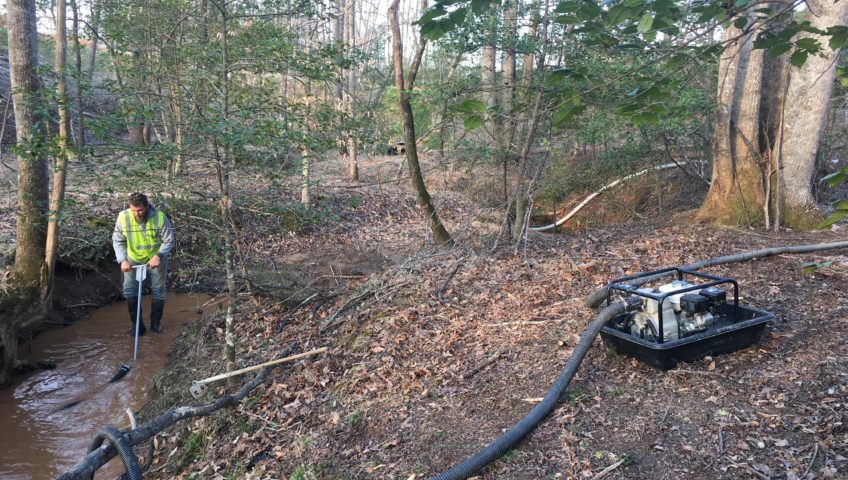
Glen Alpine, NC Bank Erosion Sediment Restoration
Streamside traveled to Glen Alpine, NC in Spring of 2018 upon request for spill response using the Sand Wand™ and Bedload Sediment Collector from client and contractor for sediment removal from bank erosion. Streamside Stream Team provided project management, training on equipment operations, and oversight on project coordination and production throughout the 3600 linear foot stretch of stream.
Streamside provided the Sand Wand™ equipment for the Prime contractors operators to use for the sediment removal. Also, the sediment was very coarse and this was a mountainous stream with a 3-5% elevation drop over 100ft in some areas, so the Bedload Collector was used upstream of a culvert where a temporary road was installed for land-use access. The Bedload Sediment Collector was installed upstream of the culvert to prevent sediment from migrating into the culvert or any further downstream of the culvert.
The Sand Wand™ was used in the upstream stretch of the restoration directly connected to a Vacuum Truck to provide the selective removal of the Sand Wand™ for operational efficiency, as well as using the Vacuum Truck as primary suction and containment of the sediment. Using this method, the crews were able to efficiently operate the Sand Wand™ up to 700 ft.
Downstream of the culvert there was no accessibility for equipment or a vacuum truck so Streamside with contractors were able to mobilize a smaller Sand Wand™ system with an ATV and trailer through the wooded landscape to access heavy deposits of sediment to be removed. Streamside used its DropBox Filter (a wedge-wire screened mobile dewatering box) to dewater and drop the sediment in manageable piles to be spread across the upland of the property. With obstacles along the entire 3600ft stretch, Streamside used its experience and knowledge of sediment removal to overcome issues to include minimal to no flow of water, accessibility, and long-distance pumping to efficiently and effectively complete the project to minimize the client cost.
North Carolina Department of Environmental Quality (NCDEQ) was the regulatory agency overseeing the sediment removal on the project.

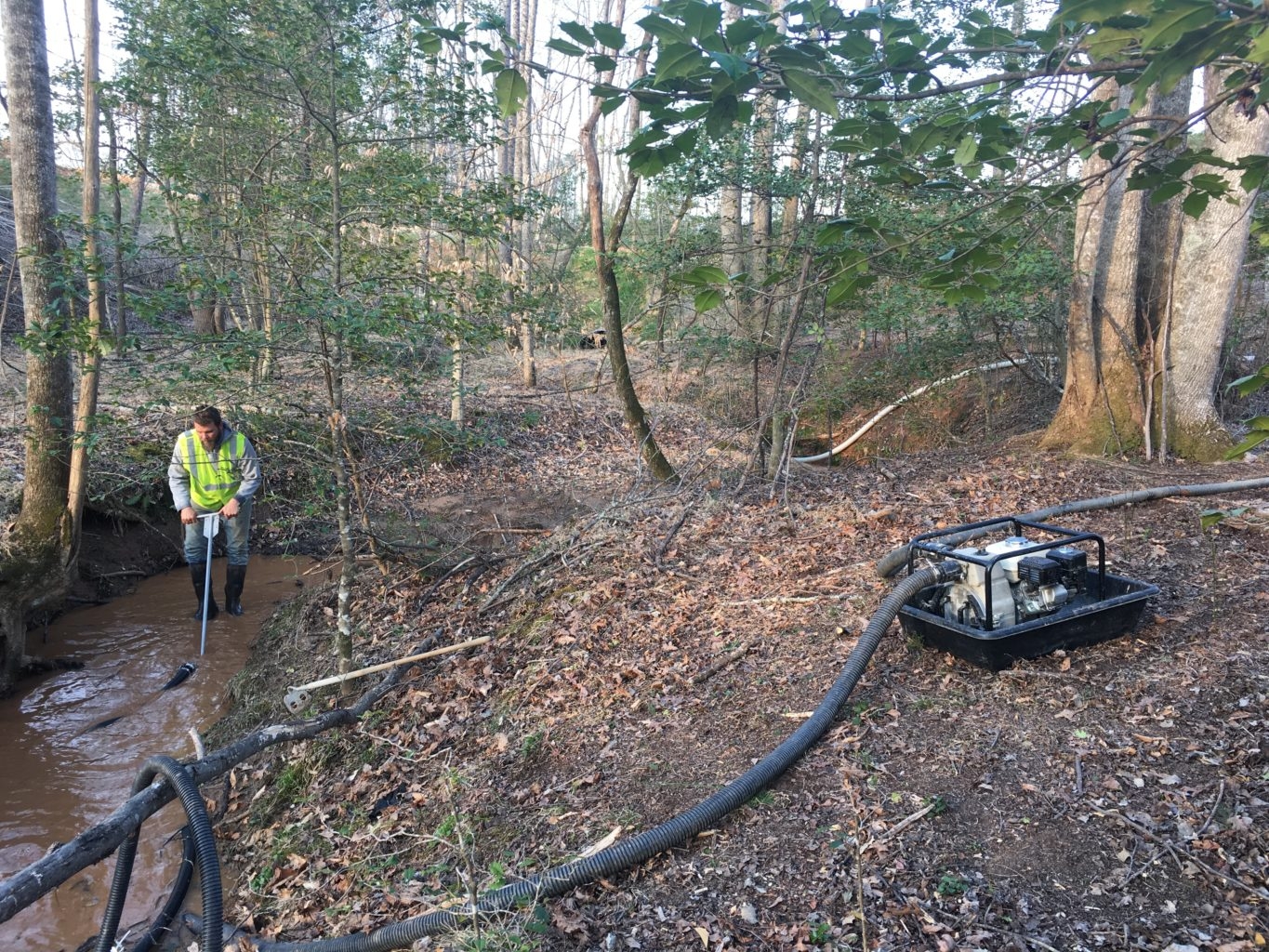
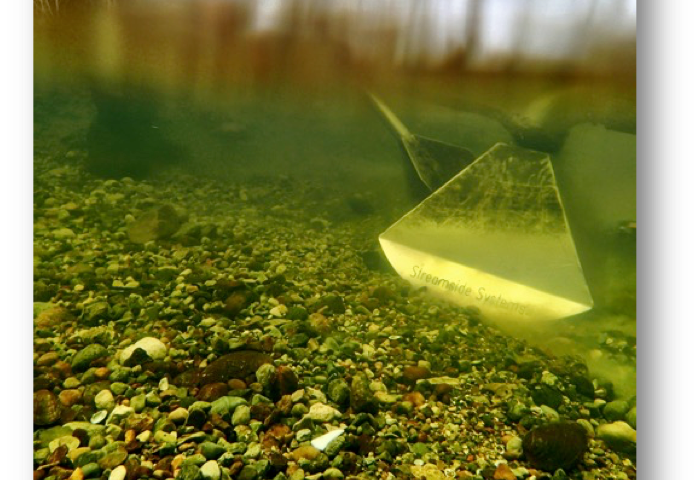
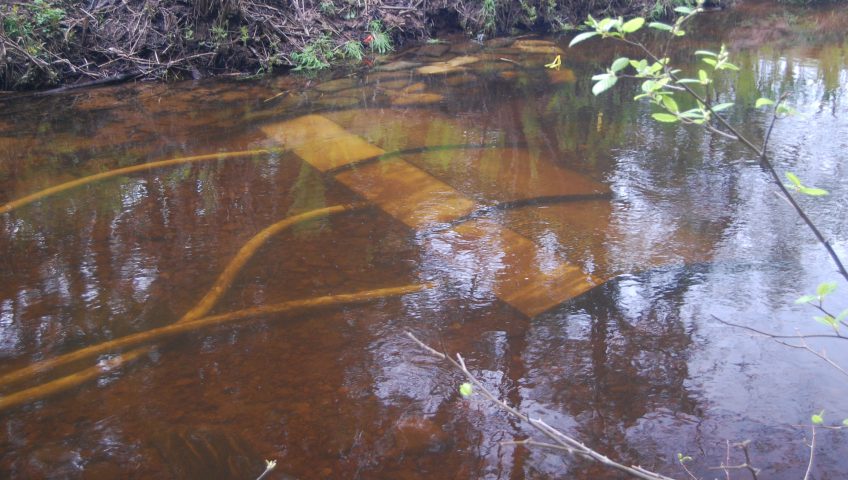
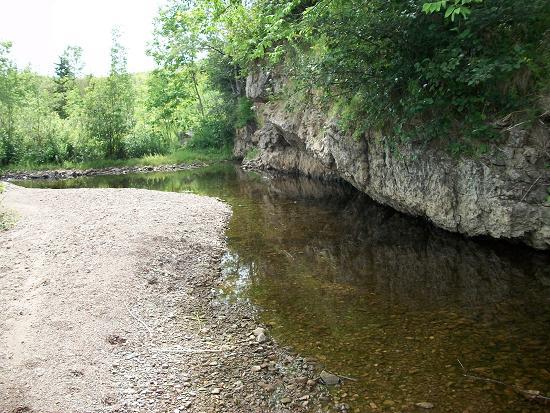
Recent Comments